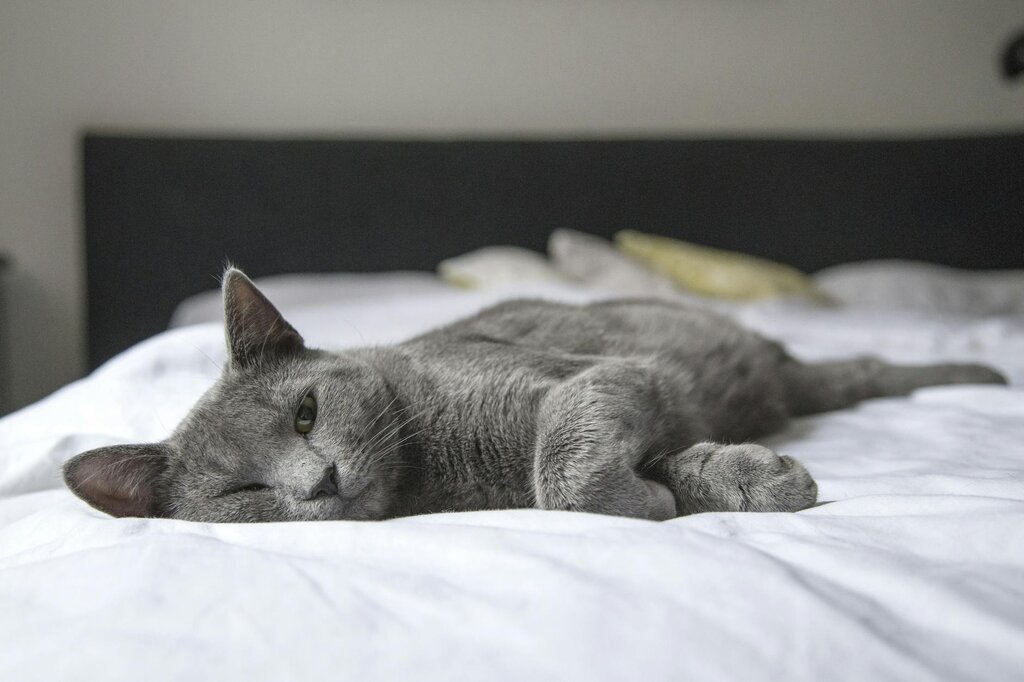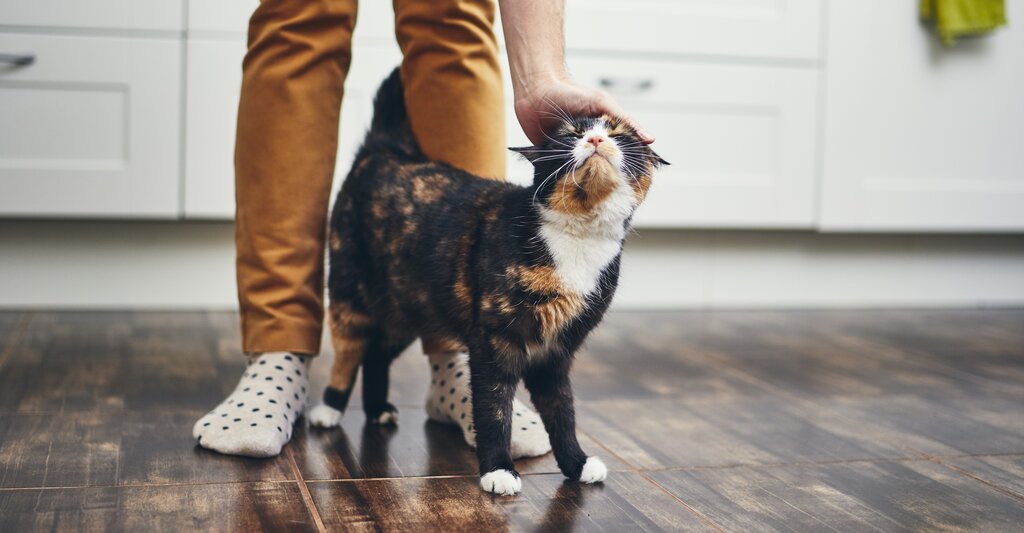Last Updated: 08/10/2025
Can Indoor Cats Get Fleas?
It's a common misconception that indoor cats don't get fleas. Our expert vets breakdown everything you need to know.
Author: Dr Maree Monaghan BVSc (Hons)
Reading Time: 8 minutes - short read
Many cat owners believe that keeping their feline friends indoors shields them from the risk of flea infestations. They often think that fleas are a problem exclusive to outdoor cats, leading to a false sense of security and a lack of preventive measures for their indoor cats.
However, this misconception can lead to unexpected and unpleasant surprises. Fleas are not just an outdoor menace; they can easily infiltrate your home and infest your indoor cat. These tiny parasites are not only a source of discomfort and irritation for your cat, causing incessant itching and potential allergic reactions, but they can also transmit harmful diseases.Furthermore, once inside your home, fleas can multiply rapidly, making them difficult to eliminate and turning a small problem into a full-blown infestation.
The good news is that with the right knowledge and preventive measures, you can protect your indoor cat from fleas. This article will dispel the myth that indoor cats can't get fleas, explain how fleas can invade your home, and provide practical advice on how to recognize, treat, and prevent flea infestations. By understanding the risks and taking proactive steps, you can ensure a comfortable, healthy, and flea-free environment for your indoor cat.
Can indoor cats get fleas

Yes, indoor cats can get fleas. Contrary to popular belief, indoor cats are not immune to fleas and they are incredibly resilient and versatile parasites that can find their way into your home and onto your cat in a variety of ways. Understanding how this happens is the first step towards effective prevention and treatment.
How do indoor cats get fleas?
Fleas can infiltrate your home through several avenues. One of the most common ways is through other pets in the household. If you have a dog that spends time outdoors, for instance, it can easily pick up fleas and bring them inside, where they can then infest your cat.
Humans can also unwittingly transport fleas into the home. Fleas can latch onto clothing, shoes, or other items and be carried inside. Once there, they can jump onto your cat and make themselves at home.
Rodents and other wildlife can also bring fleas into your home. If you have a rodent problem, those mice or rats could be carrying fleas. Similarly, if your cat spends time near windows or screened-in porches, they could potentially come into contact with fleas from possums, birds, or other wildlife.
Lastly, if you live in an apartment building or are moving into a new home, fleas can be a concern. Fleas can survive for a long time without a host, so if the previous tenants or owners had pets with fleas, those fleas could still be present.
Factors contributing to flea infestations in indoor cats
Several factors can contribute to a higher risk of flea infestations in indoor cats. The presence of other pets, particularly those that spend time outdoors, is a significant factor. The more animals in the home, the higher the chances of fleas being brought inside.
The environment can also play a role. Fleas thrive in warm, humid conditions. Therefore, homes with such conditions can be more susceptible to flea infestations.
Human behaviour can also contribute to the risk. If you frequently visit places where animals are present, such as parks or friends' homes with pets, you could potentially bring fleas back to your own home.
Lastly, lack of preventive measures can lead to flea infestations. Many cat owners don't use flea preventatives on their indoor cats because they believe the risk is low. However, as we've seen, indoor cats can and do get fleas, so using a preventative is always a good idea.
Signs of a flea infestation in your indoor cat
Even indoor cats can fall victim to flea infestations, and recognizing the signs early can help you take swift action to alleviate your cat's discomfort and prevent the infestation from worsening.
Here are some common signs that your indoor cat may have fleas:
Treating your indoor cat for fleas

Once you've identified a flea infestation in your indoor cat, it's crucial to take immediate action to eliminate these pests. Treating a cat for fleas involves a two-pronged approach: treating your cat and treating your home.
The first step in treating a flea infestation is to address the problem directly at the source: your cat. There are numerous safe and effective products available on the market designed specifically for treating fleas in cats. These include topical treatments that are applied directly to the cat's skin, collars and oral medications.
Topical treatments, also known as spot-on treatments for cats, are among the most commonly used. They're easy to apply and can start killing fleas within hours. Cat flea collars, flea sprays and oral medications are another option. Regardless of the type of product you choose, it's essential to consult with a veterinarian before starting any treatment. Your vet can recommend the most appropriate product based on your cat's age, weight, overall health, and the severity of the infestation. Remember, never use a product designed for dogs on your cat, as it can be harmful or even fatal.
Top Recommendations for Flea Prevention in Cats
Treating your home
Treating your cat alone won't solve the problem if your home is infested with fleas. Flea eggs, larvae, and pupae can be present in your carpets, furniture, and even in the cracks of your floors. Therefore, a thorough cleaning is necessary.
Start by vacuuming your entire home, paying special attention to areas where your cat spends a lot of time. Vacuuming can help remove a significant number of flea eggs, larvae, and pupae. Be sure to dispose of the vacuum bag or empty the canister outside to prevent any surviving fleas from re-infesting your home. Washing your cat's bedding and any other washable items your cat frequently comes into contact with in hot water can also help kill fleas in various life stages.
In severe infestations, you may need to use flea-killing products for your home, such as sprays or foggers. These products can help kill fleas in all life stages. However, they should be used with caution, following all manufacturer's instructions, as they can be harmful if misused.
Remember, treating a flea infestation takes time. Fleas have a life cycle that can last several weeks, so it's important to continue treatment as directed by your vet and to keep your home clean to prevent a re-infestation.
How to prevent fleas in indoor cats
Preventing a flea infestation is far easier and less stressful than treating one.
Here are some strategies to help keep your indoor cat flea-free:
In conclusion, while indoor cats may seem safe from the menace of fleas, they are not completely immune. Fleas are crafty parasites that can find their way into even the most secure and cleanest of homes. However, with the right knowledge and proactive measures, you can protect your feline friend from these unwelcome guests.
Regular use of flea preventatives, maintaining a clean home, limiting exposure to potential flea carriers, and regular vet visits are all crucial steps in ensuring your cat remains healthy and flea-free. Remember, prevention is always better than cure. Don't wait until you notice signs of a flea infestation to take action.
Start implementing these preventive measures today, and keep your home a safe and comfortable space for your beloved pet. If you have any concerns or questions, don't hesitate to reach out to your vet. They are your best resource for ensuring the health and well-being of your furry friend.
Articles recommended for you
Our vet authored guide to the benefits of feeding your dog fresh food plus tips and advice for introducing it into their regular menu.
See our guide to protecting your pet from parasites from our vet team.
Thinking of getting a fish? Check out our guide for setting up a tank and home care tips!
Looking to understand horse feeds better? This comprehensive guide covers feeding recommendations for horses of all ages and disciplines.
Does your pet suffer from anxiety? Check out our Vet-guide for treatment options to help your pet.
History
Our experts continually monitor the health and wellness space and we update our articles when new information becomes available.
Wed Oct 8 2025
Edited by Dr Belinda Stancombe BVSc (Hons)Dr Maree Monaghan BVSc (Hons)
Veterinarian
Dr. Maree graduated from the University of Queensland in 1990 with a Bachelor of Veterinary Science and has worked in a wide variety of practices around Australia and in Papua New Guinea. She has cared for all creatures great and small and has a particular interest in senior pets and horse nutrition

